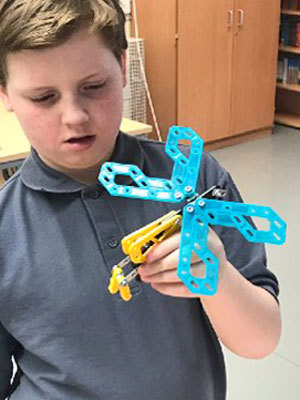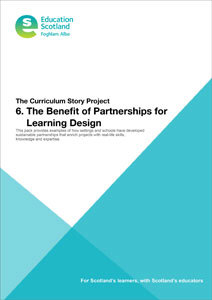The benefit of partnerships for learning design
How do you use this to improve practice?
You can use the case studies to prepare for a short professional learning discussion that could form part of your weekly meeting or professional development slot. There are more developed Practical Activities that you can set aside planning time to explore alone or with colleagues.
You may wish to use these discussion prompts with your team or create an interdisciplinary learning session with colleagues from across your setting. Set aside three sessions to tackle each question in turn - use the time between sessions to research, experiment and probe further.
Session 1: What new opportunities can you envisage for partnerships in your community?
For example, what local businesses or charities has your school/setting not worked with recently or perhaps never?
Session 2: How could you apply or adapt the example of pupil passports to present information about learners’ needs to partners?
For example, what essential information about attributes, skills, or passions might you include on a passport?
Session 3: How do you overcome challenges in building more community partnerships?
For example, how could you use former students or local residents to provide partnership experiences? How could you use technology to pursue partnerships beyond the community, even making links internationally?
Explore these examples
Calderglen High School, East Kilbride: Community partnerships offer new opportunities.
Calderglen High School has made community partnerships that seek to offer learners real-life connections, goals, and ambitions. Partnerships provide relevant opportunities and real-world experiences. They impact students who struggle to succeed within the traditional examination pathway. The partnerships allow for new learner pathways, choices, and networks.
At Calderglen High, partners are viewed as more than visitors to the school. The partners actively shape the learning. For example, in Craft, Design and Technology, is it often a struggle to maintain momentum over seven or eight weeks using the typical one-period-a-week structure - the slow pace is a challenge. The better option was to take learners out to work with a partner for one day, in an intensive project that exposes them to new techniques, technology and people in the industry.
Key features of using a curriculum design cycle at Calderglen High School
- Partnerships offer real-life resources and expertise that the school cannot provide.
- The success of partnerships is of mutual benefit to both the school and the partner.
- Successful partnerships evolve and improve through close collaboration and communication between the school and the partner.
- Partnerships have evidenced a clear impact on the quality of learning experiences band influenced young people's positive learning attributes.
- A design thinking approach encouraged the school to ‘think big’ around the partnership between school and parents.
- The ‘Dream Team’ mentorship scheme has offered inclusive support for learners without adding extra workload to teachers and Deputes.
Inclusion and Support Service, West Lothian: partners planning together
 A collaborative partnership planning approach between educators and partners meets individual learners' needs. The introduction of anonymous pupil passports allows partners to discuss and plan potential experiences best suited to the learner’s unique needs.
A collaborative partnership planning approach between educators and partners meets individual learners' needs. The introduction of anonymous pupil passports allows partners to discuss and plan potential experiences best suited to the learner’s unique needs.
Key features of using an enquiry design cycle at the Inclusion and Support Service:
- Partners are invited to planning events that involve them directly in the planning process.
- Pupil passports are an innovative way to share anonymised information about learners.
- Although partnership learning experiences are designed through the lens of one pupil's passport, the impact is beneficial and inclusive for all learners.
- The ISS is beginning to offer the same approach to secondary schools via a new network of practitioners.
- Partners are carefully selected and briefed before planning events about the purpose and impact they can have.
- The delivery of partnership planning events focuses directly on the emotional benefits that partners will have from participating and making a difference in young people’s lives.
 Downloads
Downloads
PDF file: Case study in detail (470 KB)
PPT file: Discussion and practical activities (223 KB)
PDF file: Discussion and practical activities (155 KB)
Next Steps
Tell us how it went:
- On social media, using the hashtag #curriculumstories
- By email curriculuminnovation@educationscotland.gov.scot
